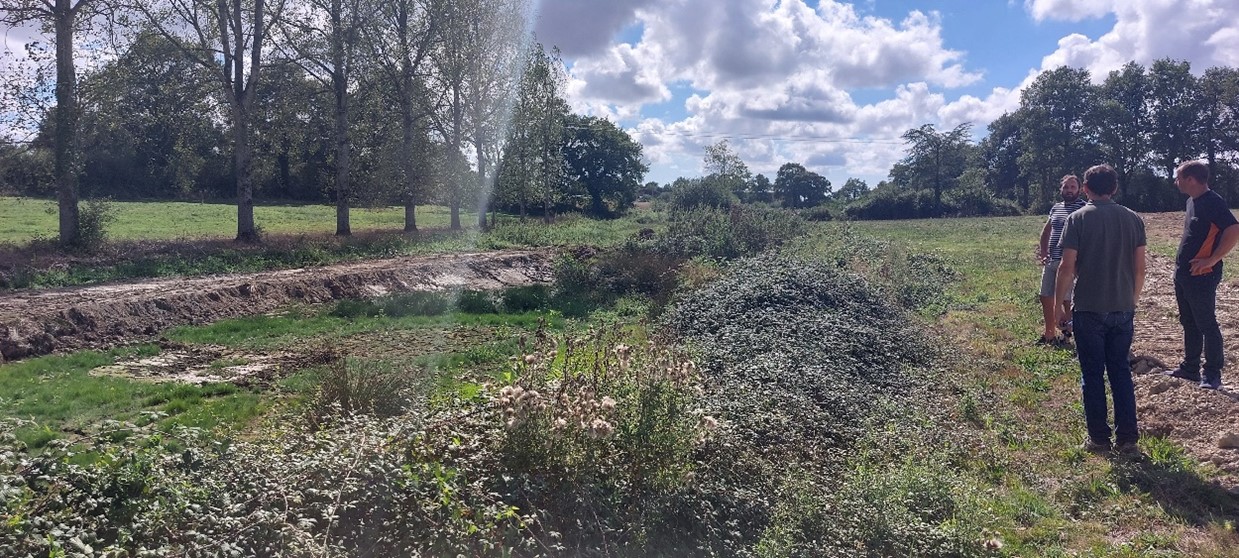
07 Nov 2023 The Nature Restoration Law: State of Play leading up to the final negotiation
9 November 2023, Brussels: Today, the final negotiations on the nature restoration law take place with the three main EU institutions . These follow lengthy discussions since the European Parliament voted in favour of the law in July, although the resulting text was very different from the original European Commission proposal. The text was close to the “General Approach” supported by the Council in late June, but with some key elements deleted or substantially modified.
In this context, Article 4 on “terrestrial, costal, and freshwater ecosystems” is one of the main articles in the original proposal as it contains time-bound obligations for Member States to put in place restoration measures for habitats not in good condition and measures to re-establish habitats in places where they have been lost. The restoration obligations cover habitats listed in Annex I[1] to the proposal and such habitats can be located inside and outside Nature 2000 areas. The latter is an ambitious and important element as many degraded habitats are outside Nature 2000 areas.
The European Parliament substantially modified this article by deleting the time-bound obligations and limiting them to Nature 2000 areas. It could be argued that restoration obligations for Nature 2000 areas already exist under the current EU legislation, so it is not clear what novelty this article introduces. The European Parliament’s changes to Article 4 are not present in the Council General Approach, which preserves the time-bound obligations inside and outside Nature 2000 areas.
Further, Article 9 on “agricultural ecosystems” contains an obligation for Member States to put in place restoration measures to ensure a positive increase of biodiversity in agricultural ecosystems (including in areas not covered by the habitats listed in Annex I). As FACE already underlined during the discussion leading to the adoption of the CAP post 2020, high-diversity landscape features on agricultural land, are essential for ensuring the growth of small game populations. This article on agricultural areas was completely deleted by the European Parliament, but it is still present in the Council General Approach.
It is unclear when the regulation will enter into force as the European Parliament’s text specifies that the regulation will apply only when the Commission has provided scientific data on the necessary conditions to guarantee long-term food security. In addition, it foresees a possibility to postpone the restoration targets in the regulation in the event of exceptional socio-economic consequences. The Council’s General Approach does not consider any of these elements.
Now that the trilogue is very close to finalisation, it remains to be seen what agreement the co-legislators (the European Parliament and the Council) will be able to find on the final text of the Restoration Law, which should be reached by the end of the year. The discrepancies between the Parliament’s text and the Council’s General Approach could make the negotiations more difficult than foreseen.
Once the text is adopted, Member States will have to submit their draft National Restoration Plans to the Commission within 24 months following the entry into force of the regulation. The Commission will have 6 months to assess these plans and make observations to the Member State concerned. Member States will then have 6 months from the date of receipt of observations from the Commission to finalise, publish and submit the plan to the Commission.
In the meantime, hunters will continue their efforts with restoration projects benefiting a wide range of huntable and non-huntable species across Europe.
Note: Restoration should not be confused with the protected area targets established in the EU Biodiversity Strategy for 2030 and further explained in the European Commission Staff Working Document on Criteria and Guidance for Protected Areas Designation. Nature restoration does not imply stopping activities in restored ecosystems.
____________________________________________
[1] These habitat types are: 1. Wetland (coastal & inland), 2. Grassland and other pastoral habitats 3. River, Lake, Alluvial and Riparian habitats, 4. Forests, 5. Steppe, Heath and Scrub Habitats 6. Rocky and Dune habitats.


No Comments